Wednesday 21 Oct 2020 at 3 pm
Wednesday 28 Oct 2020 at 3 pm
Wednesday 25 Nov 2020 at 2 pm
Wednesday 2 Dec 2020 at 3 pm
Sunday 6 Dec 2020 at 3 pm
Soundings: Olivia Whetung and the Ladner Clock Tower Carillon
-
Olivia Whetung
ArtistOlivia Whetung is anishinaabekwe and a member of Curve Lake First Nation. She completed her BFA with a minor in anishinaabemowin at Algoma University in 2013, and her MFA at the University of British Columbia in 2016. Whetung works in various media including beadwork, printmaking, and digital media. Her work explores acts of/active native presence, as well as the challenges of working with/in/through Indigenous languages in an art world dominated by the English language. Her work is informed in part by her experiences as an anishinaabemowin learner. Whetung is from the area now called the Kawarthas, and presently resides on Chemong Lake.
Read More
-
Sasha Kow
MusicianSasha Kow is a Malaysian composer based in Vancouver. She completed her BMus in Composition at the University of Oregon, and is currently in her second year of her Master of Music in Music Composition at the University of British Columbia. Her work strives to understand where and how her background and upbringing fit into the world of Western contemporary art music. Through her involvement with the Score Cluster Research, she seeks to diversify her approach to writing music and hearing sound.
Read More
-
Athena Loredo
MusicianAthena Loredo is a composer based in Vancouver. She grew up in Newfoundland and obtained a BMus (Hons) in composition from Memorial University. Currently, Loredo is completing a Master’s in Composition at the University of British Columbia. Her compositional style is influenced by the manipulation of musical fragments. From quoting Bach, Prokofiev and Dvorak in a symphonic poem to creating variations on a Mexican folk song, Loredo explores combinations of timbres and melodic fragments, reworking music to create something new.
Read More
-
Joseph Stacy
MusicianJoseph Stacy is from the United States, having grown up in the Appalachian community of Pulaski, Virginia. He graduated summa cum laude from Ohio University in 2019 with a BMus in Piano Performance and Pedagogy. He is currently in his second year of the Master of Music in Piano Performance at the University of British Columbia, where he is a student of Mark Anderson. In addition to his performance career, Stacy has presented at multiple state and national conferences throughout the US on subjects ranging from performance health to equitable access of music involvement. Stacy seeks social justice engagement through his work as a performer, pedagogue and scholar by pursuing interdisciplinary projects that are culturally relevant and dismantle colonialist norms persisting throughout North American society.
Read More
Olivia Whetung
Strata, 2018
Miyuki Seedbeads, jar, bottles, metal plinth and shelf, audio recording
Collection of the artist
Whetung invites gallery visitors to pour different coloured beads from individual small jars into mason jar, creating a layering of sounds as each bead joins the growing pile. Once the container is filled, the artist turns the amalgam of beads into an entirely new piece – a rectangular beadwork unique to the Belkin’s iteration of the exhibition. Whetung creates a new beadwork for each gallery the Soundings exhibition is presented, each work hanging in succession.
These various forms of interaction on behalf of viewers as well as the artist herself disrupt the notion of a work of art as a complete and finished product. Whetung forces us to question the temporality of the piece to insist upon its existence along a timeline outside of the traditional exhibition cycle. The creation of the beadwork, at first dictated by the random ordering of pours from gallery visitors, is then reconfigured to newly encapsulate the traces of their divergent temporalities. Each bead is reordered into a unique visual network, its pattern appearing as a notation to be read, played and interpreted.
A series of performances by students from the UBC School of Music interpret and activate Whetung’s beadworks as scores themselves. Shifting our understanding of Whetung’s pixilated composition as a digital score, Sasha Kow, Athena Loredo and Joseph Stacy will “play” these works through the Ladner Clock Tower’s carillon, the chiming mechanism that emulates the sounds of bells. An engagement with the work as such intends to investigate how a score can be a call and tool for decolonization, challenging scripts of understanding that are often taken as absolute, and thinking about the resonances that intermedial and interdisciplinary engagement can foster.
UBC’s clock tower is not unlike the community clocks found in public plazas throughout the Western world. The echo of bells resounding across public space asserts the notion that the experience of time is common to all.
Writing about the role of bells in Canadian history, musicologist Patrick Nickleson notes that “settler Canadians were being trained into a form of nostalgic listening within which bells were a symbol of the harmonious community shared by both “native” and “newcomer” Canadians, with its reference to Old World community.”[1] He also describes how bells functioned as insidious colonizing tools, especially in Residential Schools: “This sonic and temporal organization aimed to break Indigenous children from their families, language, and culture such that students are sonically impelled to learn different relationships even to time. Students were expected to internalize the individual meaning of several rings per day and how that should dictate their relationship to time and their imposed duties and obligations.”[2]
UBC’s Ladner Clock Tower and carillon were gifted to the University in 1967 by Leon J. Ladner to commemorate British Columbia’s “pioneers” and in particular to the donor’s uncle William Ladner and father Thomas Ladner. As settlers to the town of Ladner in 1868, Ladner credits his family’s patriarchs as having “contributed much to the economic and political foundations of British Columbia.”
The original Ladner carillon was, according to archivist Erwin Wodarczak, “composed of 330 small bronze bars that could be played by small metal hammers. In 1997, as he points out, “it was replaced by a digital system able to play a variety of synthesized bell sounds. The clock is controlled by a master mechanism housed in the equipment building beside it.”[3] A 1998 article in UBC News describes this upgrade as being fully digital, with the option of the new carillon being played manually or programmed to play automatically. “It is capable of producing synthesized bell sounds including celesta, harp, chime, cast Flemish and English.”[4]
In essence, the clock tower serves as a tall speaker stand – its height ensuring the sound is broadcast far and wide across the campus.
1. Patrick Nickelson, “The Message of the Carillon: Bells as Instruments of Colonialism in Twentieth-Century Canada,” Intersections 36:2 (2016), https://www.erudit.org/en/journals/is/2016-v36-n2-is03986/1051594ar/
2. Ibid., https://www.erudit.org/en/journals/is/2016-v36-n2-is03986/1051594ar/
3. Erwin Wodarczak, “The Clock Tower and the Anarchists,” Trek, June 1, 2020, https://trekmagazine.alumni.ubc.ca/2013/dec-2013/features/the-clock-tower-and-the-anarchists/
4. “Carillon Bells Toll for Students, Visitors Alike,” UBC News, May 21, 1998, https://news.ubc.ca/1998/05/21/archive-ubcreports-1998-98may21-bells/
Performance of a composition for carillon and brass by Athena Loredo
7 minutes, 58 seconds
Olivia Whetung’s work is part of Soundings: An Exhibition in Five Parts at the Morris and Helen Belkin Art Gallery (September 8-December 6, 2020).
Photos: Rachel Topham Photography
Video: Aya Garcia
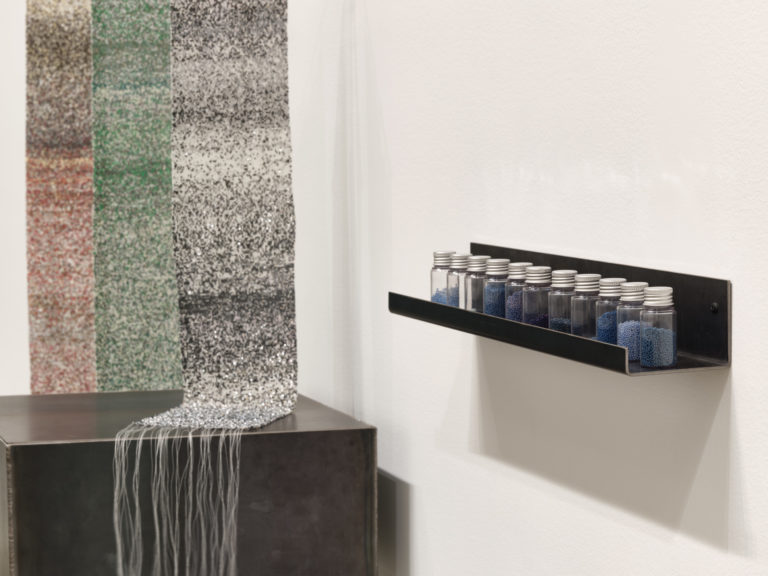
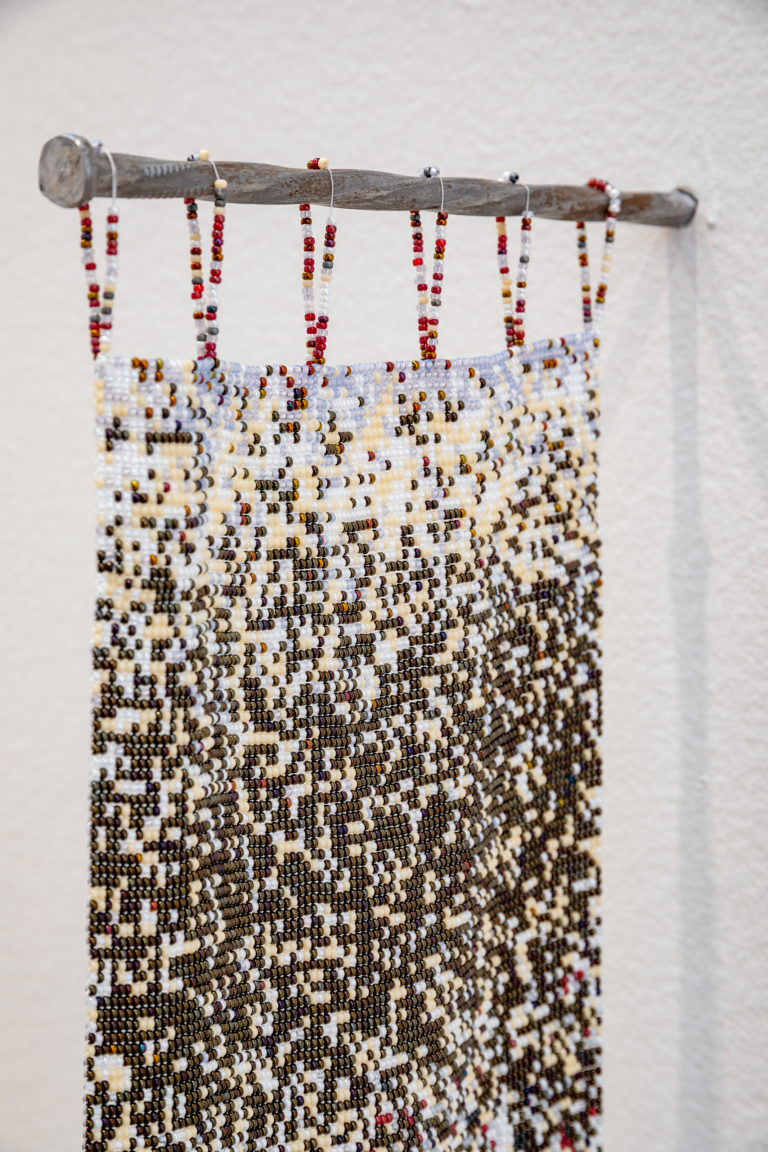
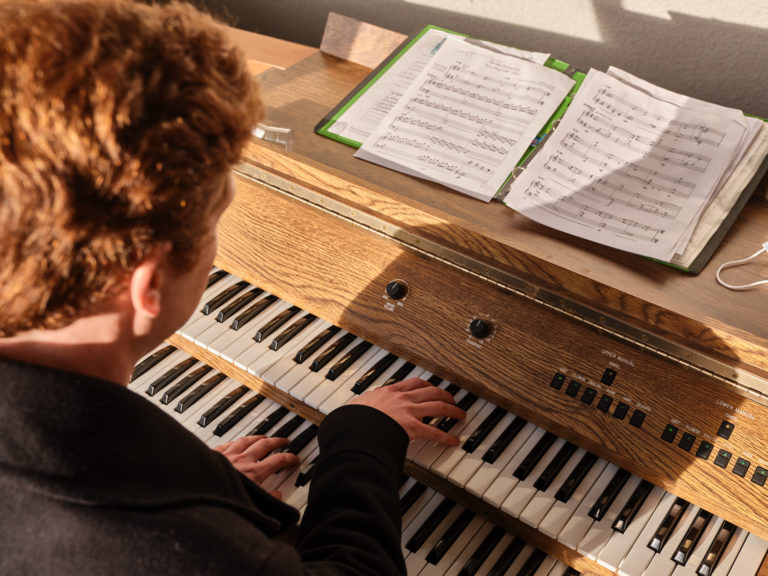

-
Olivia Whetung
ArtistOlivia Whetung is anishinaabekwe and a member of Curve Lake First Nation. She completed her BFA with a minor in anishinaabemowin at Algoma University in 2013, and her MFA at the University of British Columbia in 2016. Whetung works in various media including beadwork, printmaking, and digital media. Her work explores acts of/active native presence, as well as the challenges of working with/in/through Indigenous languages in an art world dominated by the English language. Her work is informed in part by her experiences as an anishinaabemowin learner. Whetung is from the area now called the Kawarthas, and presently resides on Chemong Lake.
Read More
-
Sasha Kow
MusicianSasha Kow is a Malaysian composer based in Vancouver. She completed her BMus in Composition at the University of Oregon, and is currently in her second year of her Master of Music in Music Composition at the University of British Columbia. Her work strives to understand where and how her background and upbringing fit into the world of Western contemporary art music. Through her involvement with the Score Cluster Research, she seeks to diversify her approach to writing music and hearing sound.
Read More
-
Athena Loredo
MusicianAthena Loredo is a composer based in Vancouver. She grew up in Newfoundland and obtained a BMus (Hons) in composition from Memorial University. Currently, Loredo is completing a Master’s in Composition at the University of British Columbia. Her compositional style is influenced by the manipulation of musical fragments. From quoting Bach, Prokofiev and Dvorak in a symphonic poem to creating variations on a Mexican folk song, Loredo explores combinations of timbres and melodic fragments, reworking music to create something new.
Read More
-
Joseph Stacy
MusicianJoseph Stacy is from the United States, having grown up in the Appalachian community of Pulaski, Virginia. He graduated summa cum laude from Ohio University in 2019 with a BMus in Piano Performance and Pedagogy. He is currently in his second year of the Master of Music in Piano Performance at the University of British Columbia, where he is a student of Mark Anderson. In addition to his performance career, Stacy has presented at multiple state and national conferences throughout the US on subjects ranging from performance health to equitable access of music involvement. Stacy seeks social justice engagement through his work as a performer, pedagogue and scholar by pursuing interdisciplinary projects that are culturally relevant and dismantle colonialist norms persisting throughout North American society.
Read More
Related
-
Exhibition
8 Sep – 6 Dec 2020
Soundings: An Exhibition in Five Parts
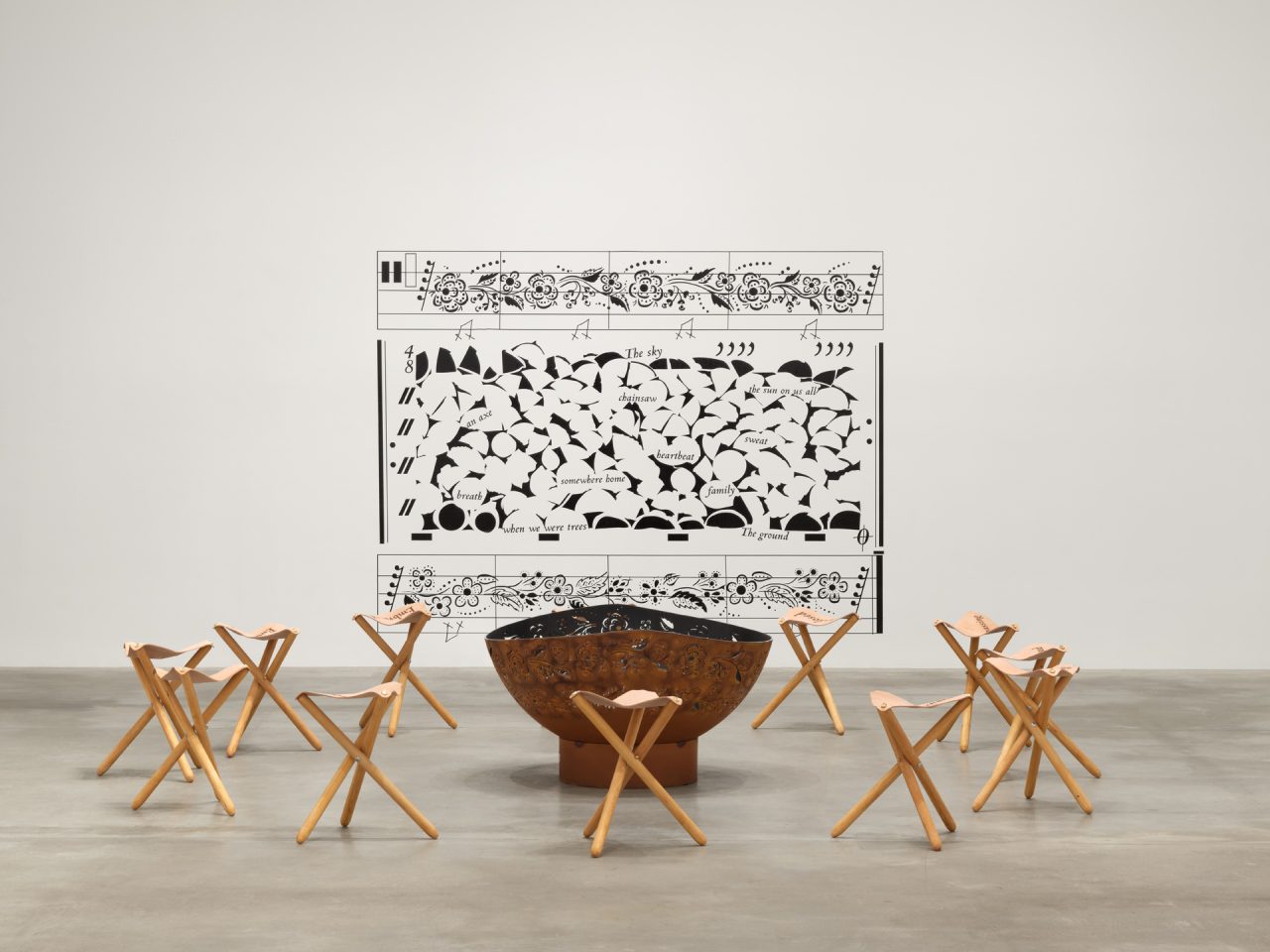
Soundings: An Exhibition in Five Parts features newly commissioned scores, performances, videos, sculptures and sound by Indigenous and other artists who respond to the question, How can a score be a call and tool for decolonization? Unfolding in a sequence of five parts, the scores take the form of beadwork, videos, objects, graphic notation, historical belongings and written instructions. During the exhibition, these scores are activated at specific moments by musicians, dancers, performers and members of the public, gradually filling the gallery and surrounding public spaces with sound and action. Curated by Candice Hopkins and Dylan Robinson, Soundings is cumulative, limning an ever-changing community of artworks, shared experience and engagement. Shifting and evolving, it gains new artists and players in each location. For this iteration on Musqueam territory, the Belkin has collaborated with UBC's Musqueam Language Program in partnership with the Musqueam Indian Band Language and Culture Department; School of Music; Chan Centre for Performing Arts; First Nations House of Learning and Museum of Anthropology to support the production of new artworks and performances by local artists.
[more] -
Event
8 Sep 2020
Soundings: Peter Morin and Parmela Attariwala
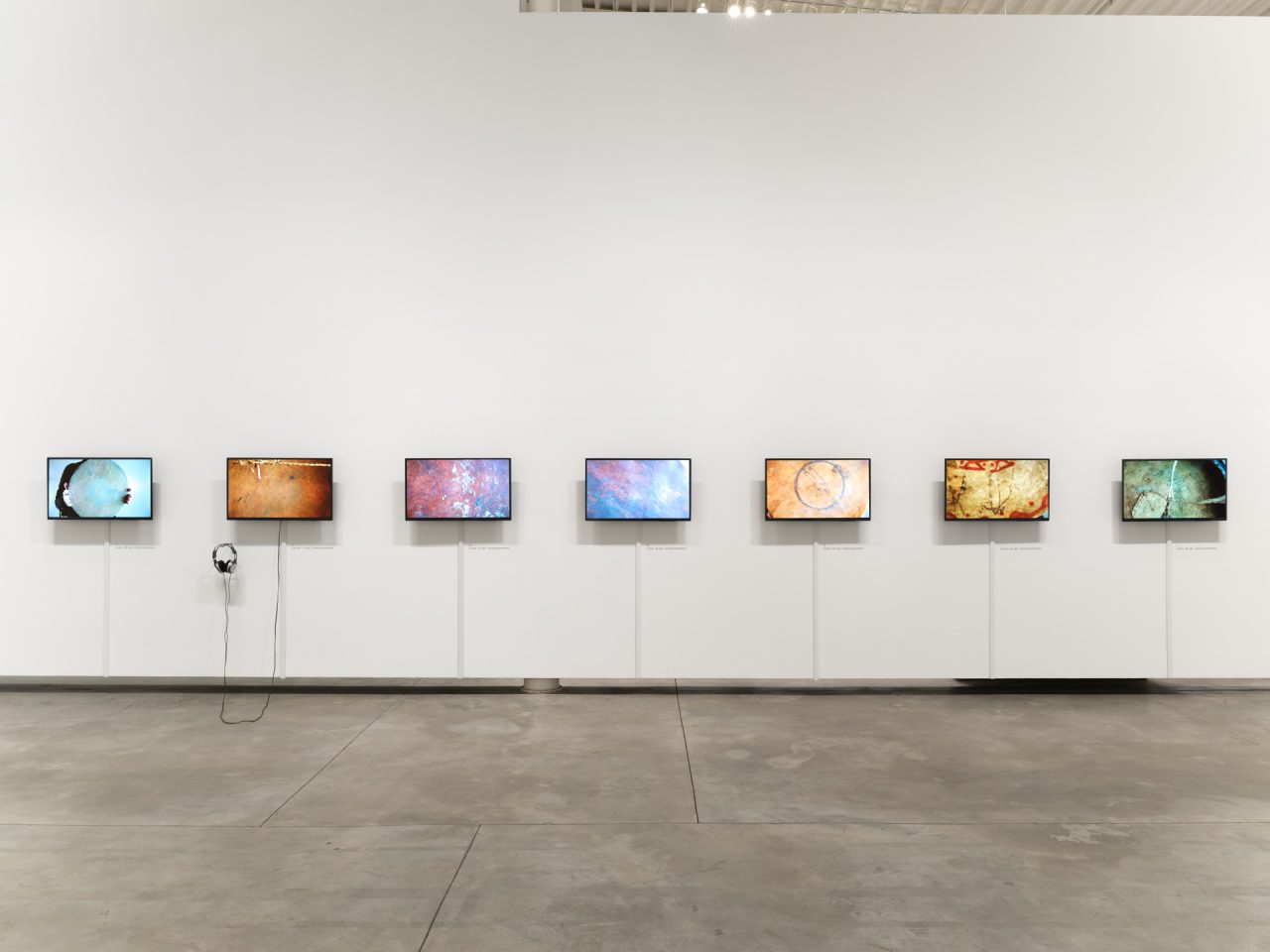
In Part One of NDN Love Songs, Peter Morin offers a score of instructions to musicians presented alongside seven video portraits. Part Two presents videos of recordings of previous iterations of the Soundings exhibition at Agnes Etherington Art Centre, Gund Gallery and Kitchener-Waterloo Art Gallery. In Part Three, Parmela Attariwala performs the score on the violin at the Belkin.
[more] -
Event
10 Sep 2020
Soundings: Diamond Point and Coastal Wolf Pack

Forming two continuous lines on this part of the traditional, ancestral and unceded territory of the xʷməθkʷəy̓əm (Musqueam) people, wəɬ m̓i ct q̓pəθət tə ɬniməɬ by Diamond Point presents two images repeating in a sequence hung on the lampposts along UBC’s Main Mall from James Hart’s Reconciliation Pole to the plaza just beyond the Belkin.
[more] -
Event
Soundings: Germaine Koh
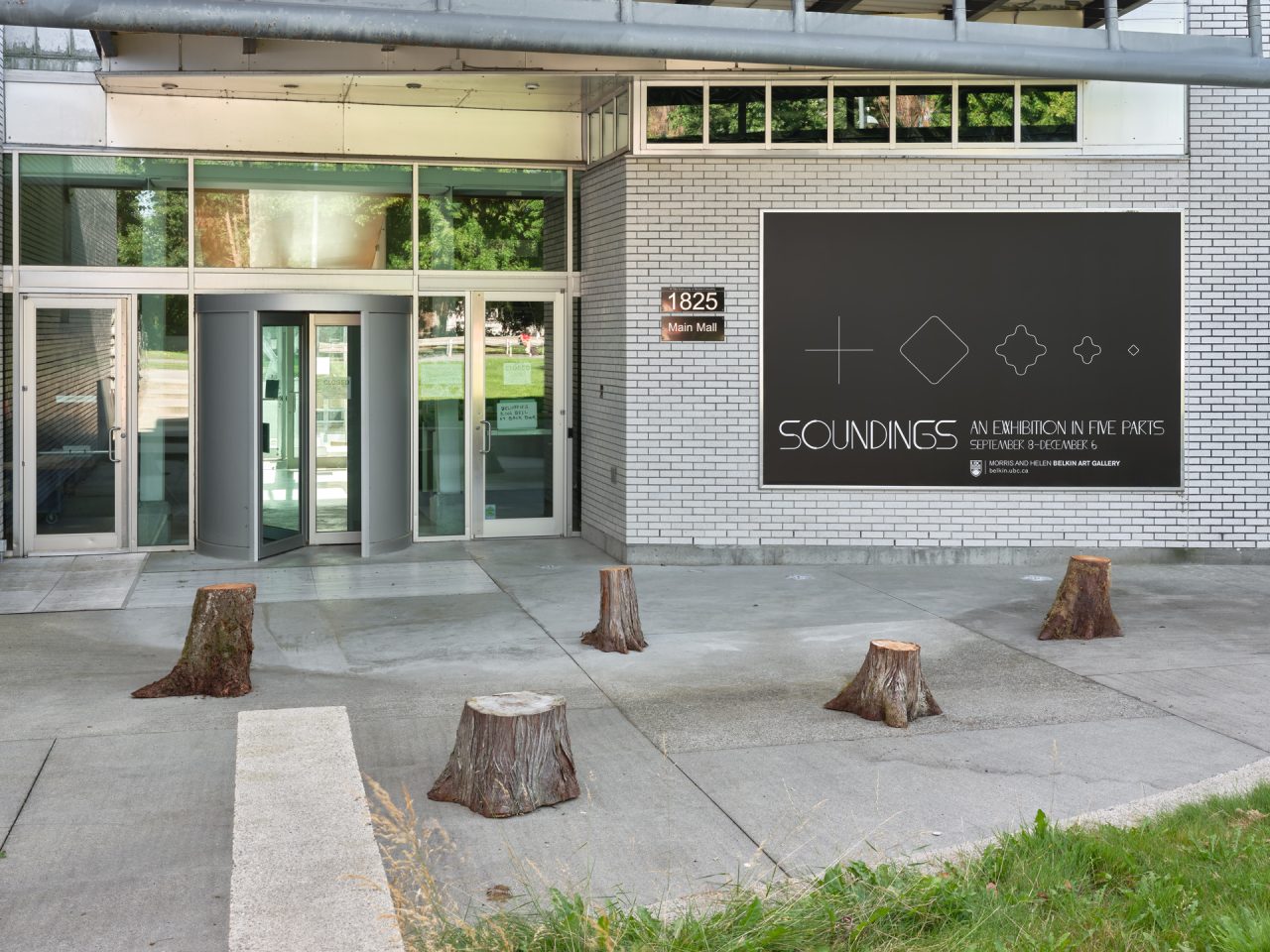
Germaine Koh’s drum is made from one of the cedar tree stumps she first brought to site for use as physical distancing stations. She worked with Belkin staff during Summer 2020 to develop COVID-19 safety and visitor interaction protocols that recognized the importance of collective care and teamwork.
[more] -
Event
8 Oct 2020 at 4 pm
Soundings: Raven Chacon and Symphonic Wind Ensemble
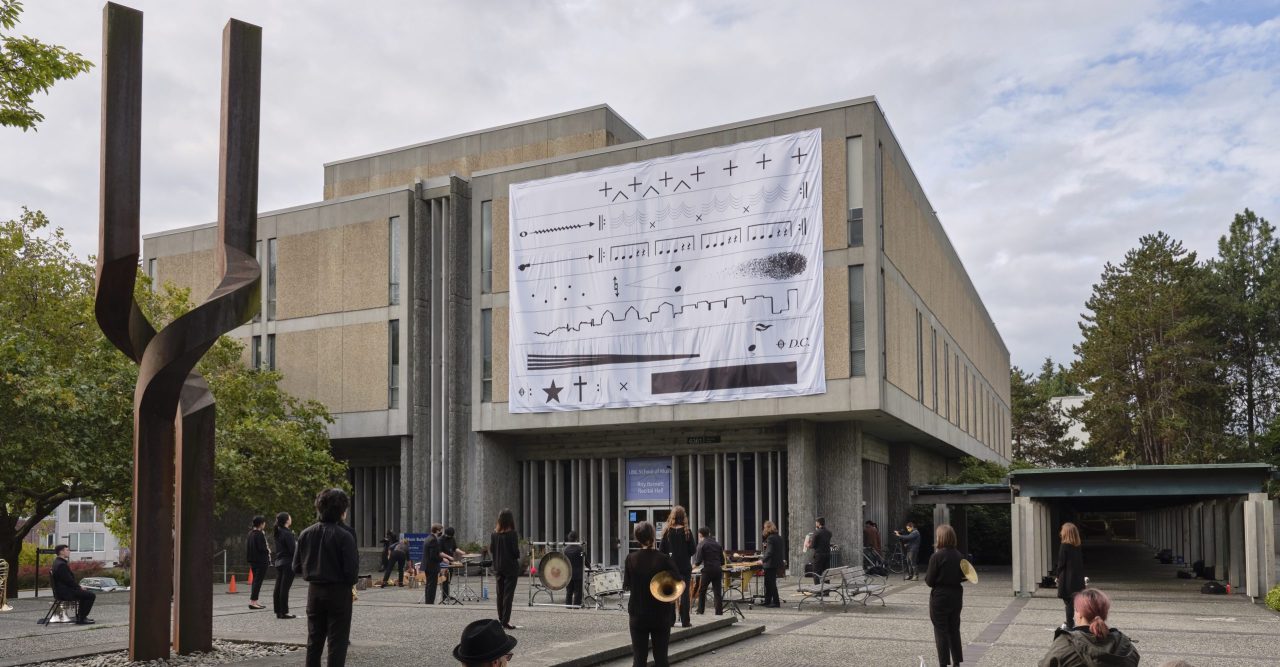
Around the corner from the Belkin Gallery, Raven Chacon's score American Ledger (No. 1) hangs on the exterior of the Music Building at 6361 Memorial Road, UBC. The score incorporates a traditional musical score with Navajo iconography and is to be performed by "many players with sustaining and percussive instruments, voices, coins, axe and wood, a police whistle and the striking of a match."
[more] -
News
31 Aug 2020
Soundings: Reading Room
The following is a list of resources related to Soundings: An Exhibition in Five Parts. The list of resources compiled here is not an official recommendation, but is rather a list of suggested readings compiled by Public Programs and graduate student researchers at the Belkin Art Gallery. These readings are intended to provide additional context for the exhibition and act as springboards for further research or questions stemming from the exhibition, artists, and works involved.
[more] -
Event
Sonic Responses: Lucy Strauss

Lucy Strauss plays viola on the knoll in front of the AMS Student Nest building at UBC.
[more] -
Event
Sunday 8 Nov 2020 at 3 pm
Soundings: Camille Georgeson-Usher and Rachel Kiyo Iwaasa

through, in between oceans part 2 by Camille Georgeson-Usher is a beaded installation, completed during the isolation of the Spring 2020 pandemic. The artist worked from home in Toronto, a departure from her intention to spend several months on Galiano Island, BC, where she was raised.
[more] -
Event
8 Sep 2020
Soundings: Greg Staats
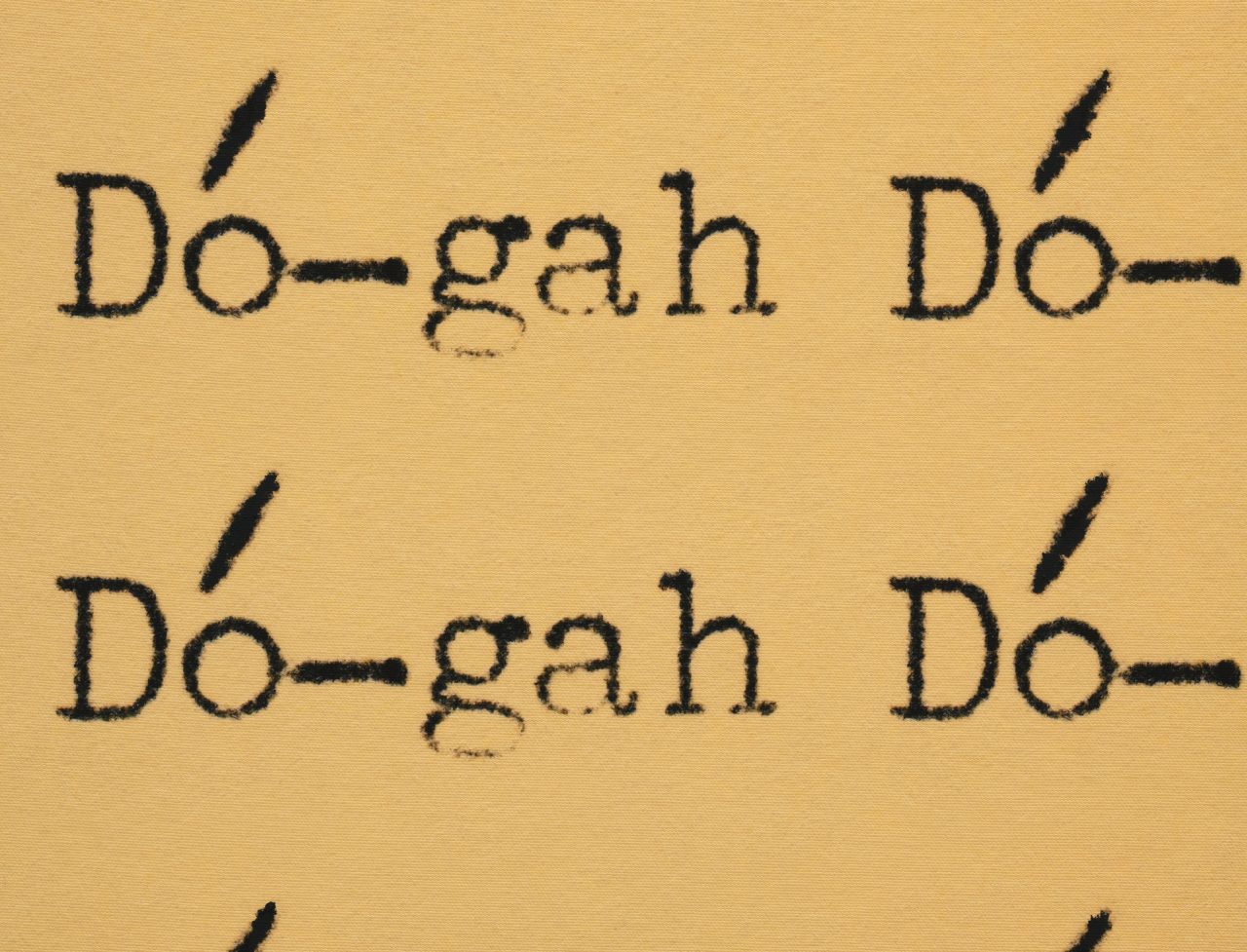 [more]
[more] -
Event
Wednesday 21 Oct 2020 at 3 pm
Wednesday 28 Oct 2020 at 3 pm
Wednesday 25 Nov 2020 at 2 pm
Wednesday 2 Dec 2020 at 3 pm
Sunday 6 Dec 2020 at 3 pm
Soundings: Olivia Whetung and the Ladner Clock Tower Carillon
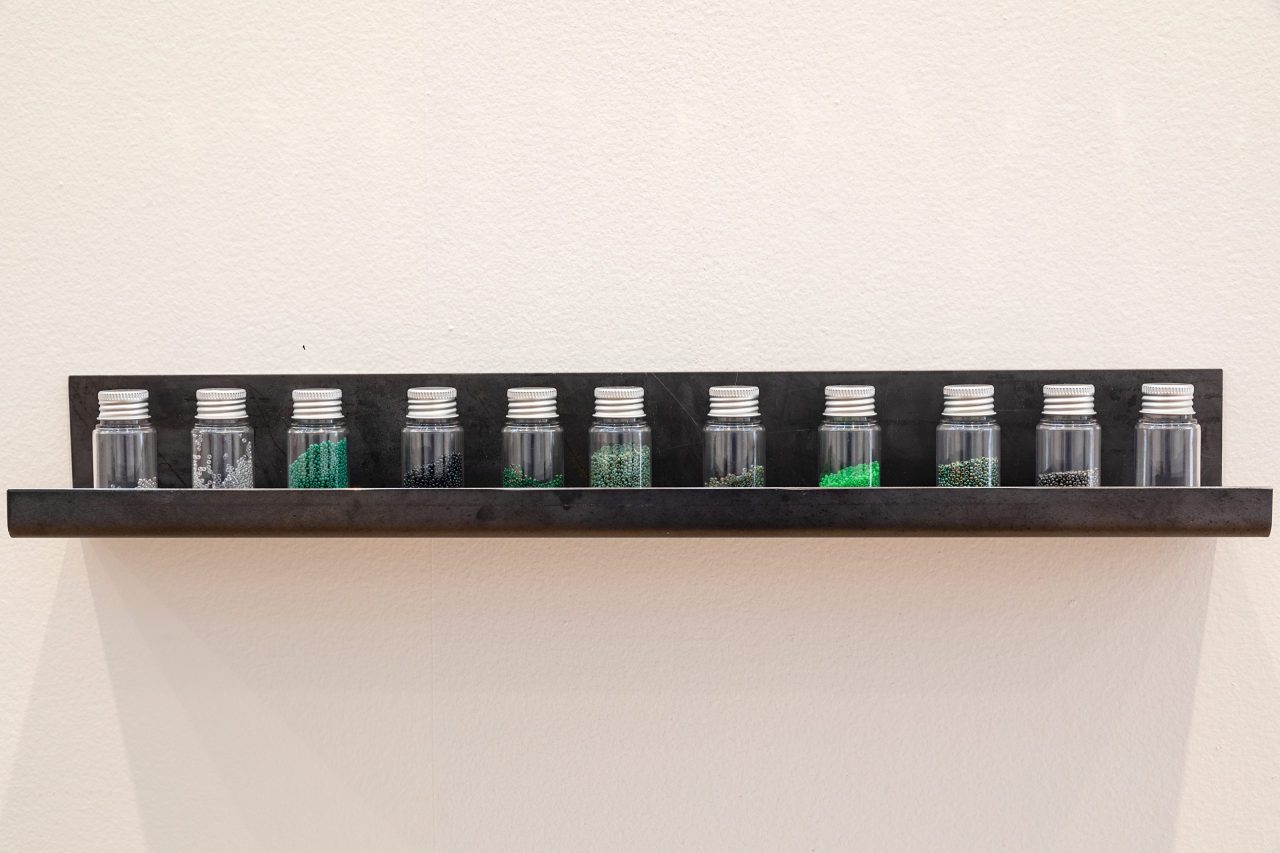
Whetung invites gallery visitors to pour different coloured beads from individual small jars into one large vessel, creating a layering of sounds as each bead joins the growing pile. Once the container is filled, the artist turns the amalgam of beads into an entirely new piece – a rectangular beadwork unique to the Belkin’s iteration of the exhibition.
[more] -
Event
Monday 30 Nov 2020 at 4:30 pm
Soundings: Tania Willard and Melody Courage

Surrounded/Surrounding includes a wood-burning fire bowl, etched leather camp stools and a life-sized rendering of the artist’s wood pile in a graphic score. Written on the split logs and the spaces between them are references to the breathing, beating labour that creates what a fire needs, as well as the trees, sun, sky and ground that surrounds and creates all else.
[more] -
News
30 Nov 2020
Belkin x CRWR: Soundings
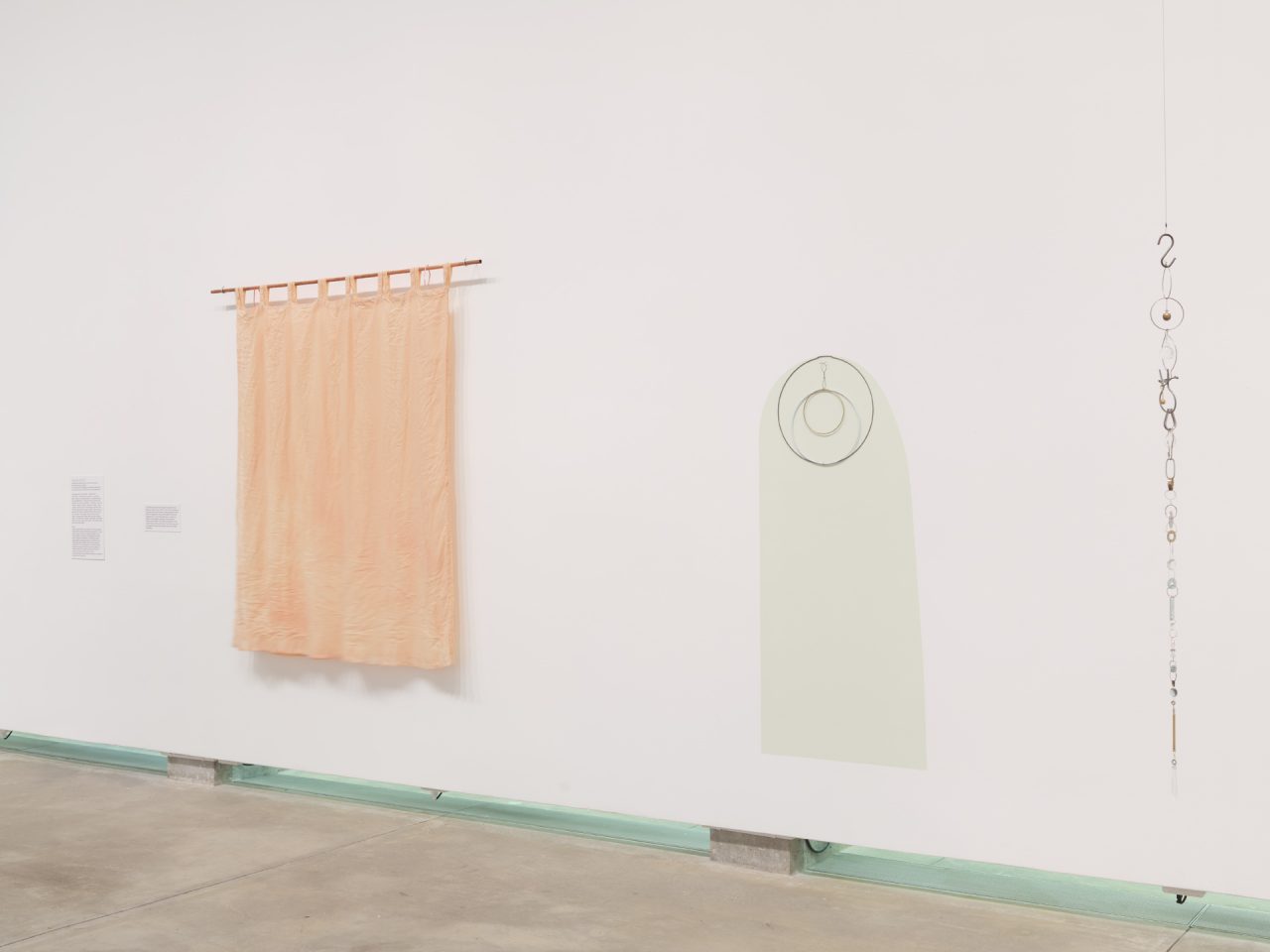
In response to Soundings: An Exhibition in Five Parts, a group of Creative Writing graduate students at the University of British Columbia have made a series of activities for visitors to take part in during their visits to the gallery. Thinking through the idea of a score as a call to respond, these activities range from sound walks to reflective worksheets to small group workshops.
[more] -
News
10 Dec 2020
Soundings: Marking Time
 [more]
[more] -
Event
Dec 2020
Soundings: UBC Contemporary Players Respond
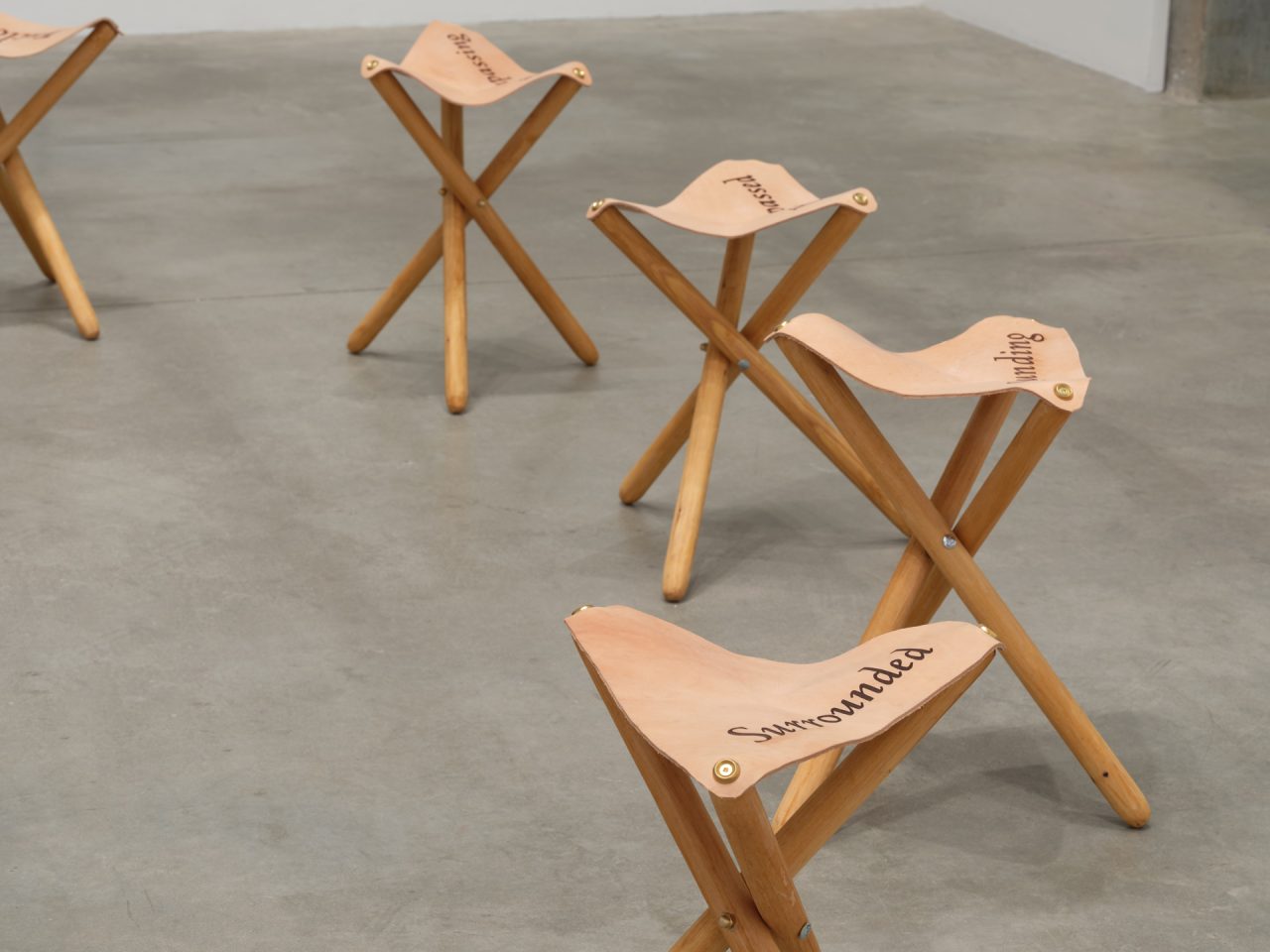
In lieu of a public concert at the Belkin as has occurred in recent years, musicians from UBC Contemporary Players chose a work by a Canadian composer to perform in an empty gallery, responding to the works of Soundings: An Exhibition in Five Parts. Videos of these performances are shared here for reference, research, and enjoyment in perpetuity. Soundings asks how a score can be a call and a tool for decolonization. The exhibition's corresponding investigations take at their centre questions of embodiment and subjectivity, of calls and responses. What are the practical matters of embodied decolonization, and how can we practice them? How does embodiment facilitate unlearning, unknowing, and the visioning of Indigenous ontologies?
[more]